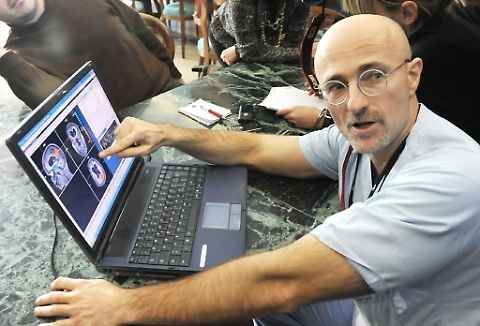Dr. Sergio Canavero recently delivered a Ted Talk in Limassol, Cyprus suggesting how a Frankenstein-like human head transplant could be ready within two years. It certainly begs the more-than-obvious question: shouldn’t we master spinal cord re-attachments and anti-rejection drugs first? Shouldn’t we make it more feasible to cure diseases than transplant your head?

Dr. Sergio Canavero wants to transplant human heads in two years. even got his first volunteer, a 30-year-old Russian man suffering from a fatal incurable muscle-wasting disease.
(NEWSER) – Some call it insane. One describes a fate “worse than death.” But for a 30-year-old Russian man whose muscles are wasting away, Dr. Sergio Canavero’s plan to transplant a human head is highly appealing, reports Medical News Today. 
“I can hardly control my body now,” says Valery Spiridonov, a computer scientist with Werdnig-Hoffman disease. “I need help every day, every minute. I am now 30 years old, although people rarely live to more than 20 with this disease.”
Canavero, an Italian physician, says he’s received many offers from people willing to undergo the world’s first human head transplant—
including transsexuals seeking another body, CNN reports. But Canavero wanted someone suffering from muscle atrophy, and chose Spiridonov.
With new reports of a human volunteer, Huffington Post, CNN, the London Telegraph, Mail Online, Medical News Today and other global media outlets have added to the story’s traction.
Here is expanded material, from Medical News Today:
Dr. Canavero told CNN he has received an array of emails and letters from people asking to be considered for the procedure, many of which have been from transgender individuals seeking a new body. However, the surgeon says the first people to undergo the procedure will be those with muscle wasting conditions like Spiridonov.
The procedure – which is estimated to take 100 surgeons around 36 hours to complete – will involve spinal cord fusion (SCF). The head from a donor body will be removed using an “ultra-sharp blade” in order to limit the amount of damage the spinal cord sustains.
“The key to SCF is a sharp severance of the cords themselves,” Dr. Canavero explains in a paper published earlier this year, “with its attendant minimal damage to both the axons in the white matter and the neurons in the gray laminae. This is a key point.”
The spinal cord of the donor body will then be fused with the spinal cord of the recipient’s head. Chemicals called polyethylene glycol or chitosan can be used to encourage SCF, according to Dr. Canavero. The muscles and blood supply will then be sutured.
The recipient will be kept in a coma for around 3-4 weeks, says Dr. Canavero, during which time the spinal cord will be subject to electrical stimulation via implanted electrodes in order to boost the new nerve connections.
The surgeon estimates that – with the help of physical therapy – the patient would be able to walk within 1 year.
Spiridonov admits he is worried about undergoing the procedure. “Am I afraid? Yes, of course I am,” he told MailOnline. “But it is not just very scary, but also very interesting.”
“You have to understand that I don’t really have many choices,” he added. “If I don’t try this chance my fate will be very sad. With every year my state is getting worse.”
Dr. Canavero Branded ‘Nuts’
Dr. Canavero has previously admitted there are two major challenges with HEAVEN-GEMINI: reconnecting the severed spinal cord, and stopping the immune system from rejecting the head. But he claims that recent animal studies have shown the procedure is “feasible.”
Unsurprisingly, however, researchers worldwide are highly skeptical of the proposal. Talking to CNN, Arthur Caplan, PhD, director of medical ethics and NYU Langone Medical Center in New York, NY, even called Dr. Canavero “nuts.”
Caplan said the procedure needs to be conducted many more times on animals before it is applied to humans, adding that if the technique is feasible then Dr. Canavero should be trying to help paralyzed patients before attempting whole body transplants.
And talking to New Scientist earlier this year, Harry Goldsmith, a clinical professor of neurosurgery at the University of California-Davis, said the project is so “overwhelming” that it is the chances of it going ahead are unlikely.
“I don’t believe it will ever work,” he added, “there are too many problems with the procedure. Trying to keep someone healthy in a coma for 4 weeks – it’s not going to happen.”

